Our Programs
Our TASC Programs
Which one is right for you?
Our club offers a full range of artistic swimming programs for swimmers of all ages and skill levels — from entry-level recreational classes to highly competitive teams.
We are here to help you find the right fit for you and your athlete.
Questions?
CONTACT US! club@torontoartisticswimming.com
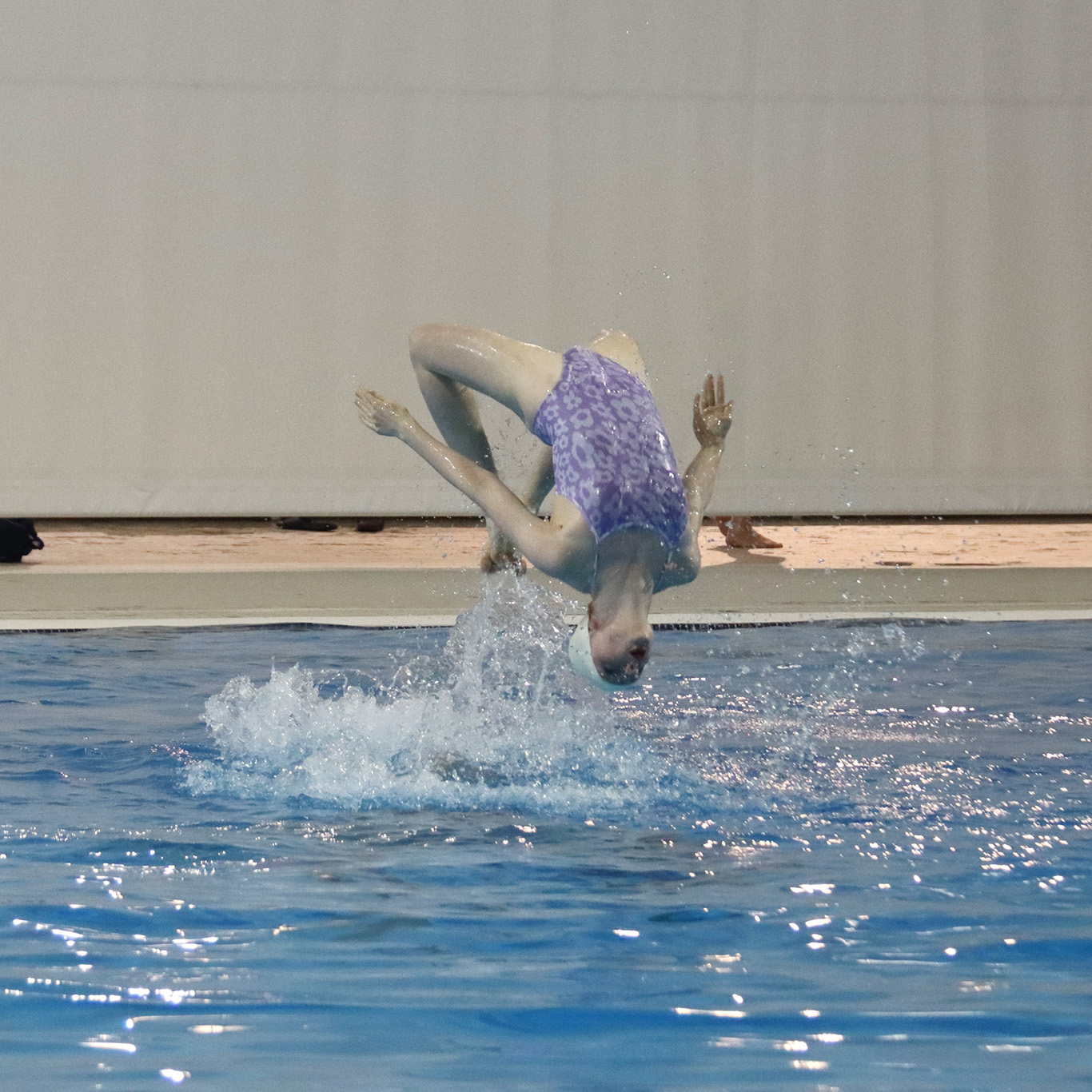
How to choose a Youth program
Overview: Learn the basics and work through program levels to further develop artistic swimming skills in a fun and inclusive environment following the national Aquago program without competing in any meets.
Age: 7 -12 (Note: contact the club if your swimmer is younger or older; there may be opportunities depending on swim skills and registration)
Best For: Young athletes who are new to the sport and/or have no interest in competing. Swimmers who can participate once or twice per week but want to learn and progress through skill levels. No experience necessary; swimmers will be placed in groups according to age/experience and swim skill.
Time Commitment: Most programs 1x weekly for 90 mins, 2x week Jupiter program for those who want to learn faster! Fall/Winter programs are full season (mid Sept- early June) – exception is the Spring Mini-session (approx 5 weeks April- May)
Fees and Payments: $160 Deposit (non-refundable) upon registration + either full fees or 2 instalments paid in Sept/Oct.
Focus Areas: Fun! Artistic swimming fundamentals and skill development through the Aquago program.
Meet & Events: No meets, but all full season programs have 2 Club Watershows (water recitals) to showcase skills
Overview: Older swimmers can enjoy the team atmosphere and experience a limited amount of competition as you improve skills through in-water and dryland training.
Age: 12+ (‘Synchro age’ as of Dec 31, 2026)
Best For: Swimmers aged 12 and up who are either new to the sport or have some Recreational experience. They want more of a challenge and to be in teams with swimmers of similar ages. Can also be swimmers who were on our younger Competitive teams and now in the Youth category they cannot commit to practicing more than 2x a week.
Time Commitment: 2x weekly, 4 hours, based on Sept-June season
Fees and Payments: $350 Deposit + seasonal fees paid in instalments starting in September
Focus Areas: Fun, team-based training with swimmers of very similar ages plus some competitive experience.
Meet & Events: Up to 2 Regional League meets plus 2 Club Watershows and other club events.
Overview: For younger and new to Competitive athletes, Competitive offers the best way to learn to compete as a team, to improve all skills. For experienced athletes, Competitive offers ways to expand your skills by doing extra training, extra routines, to learn more advanced athletic and artistic swimming skills. All Competitive teams offer the ability to meet life-long friends as you build team skills and compete together.
Age: 7-18
Best For: Young swimmers who want to learn faster and have a strong team environment and any swimmer who wants to maximize skills, participate in competitions, fully engage with their team and have the opportunity for extra routines such as duets or solos. Some artistic swimming experience at a Rec or Regional League level is recommended for swimmers ages 13+ but no experience is required for swimmers aged 10u and 11/12.
Time Commitment: 2-4x weekly, time 5-12 hours depending on age, team, experience. Developmental Competitive teams swimmers 2x to 2.5 times per week for roughly 5-7 hours, allowing lots of time to continue with other activities. Experienced Competitive teams typically train 3x per week for 9+ hours. Note: Competitive athletes may add extra training, participate in an extra routine, and advanced swimmers may compete at National-level meets.
Fees and Payments: $500 Deposit + seasonal fees paid in 4-5 instalments starting in September.
Focus Areas: Athletes of all ages learn core technique and extensive skill development with an emphasis on dryland strength and flexibility, team-building and individual growth.
Meet & Events: Younger and Developmental athletes: 3-4 Provincial meets. Experienced and advanced athletes: Up to 5 Provincial meets and the possibility of competing at up to 2 National meets. ALL athletes participate in 2 Club Watershows and other events.
Overview: Mixed Ability offers an option for athletes with a physical or an intellectual, developmental or communication disbility to develop artistic swimming skills in an integrated program with non-disabled peers. Mixed ability groupings will likely compete at the Provincial level, though this will depend on individual needs and interests.
Age: 12 and up
Best For: Youth athletes with physical and/or cognitive disabilities who wish to develop skills and experience some competition in more of a team environment. Some Rec or other artistic swimming experience may be recommended, depending on the non-disabled participating swimmers.
Time Commitment: Depending on needs and interests of the participants, but likely 1-2x weekly, each approximately 60-90 mins.
Fees and Payments: $250 Deposit + balance in instalments. Fees will be determined based on needs of participants, including extent of 1×1 training needed.
Focus Areas: Artistic swimming skill development with a team twist and some competitions
Meet & Events: 3-5 meets, depending specific team configuration and needs, plus 2 Club Watershows and other club events
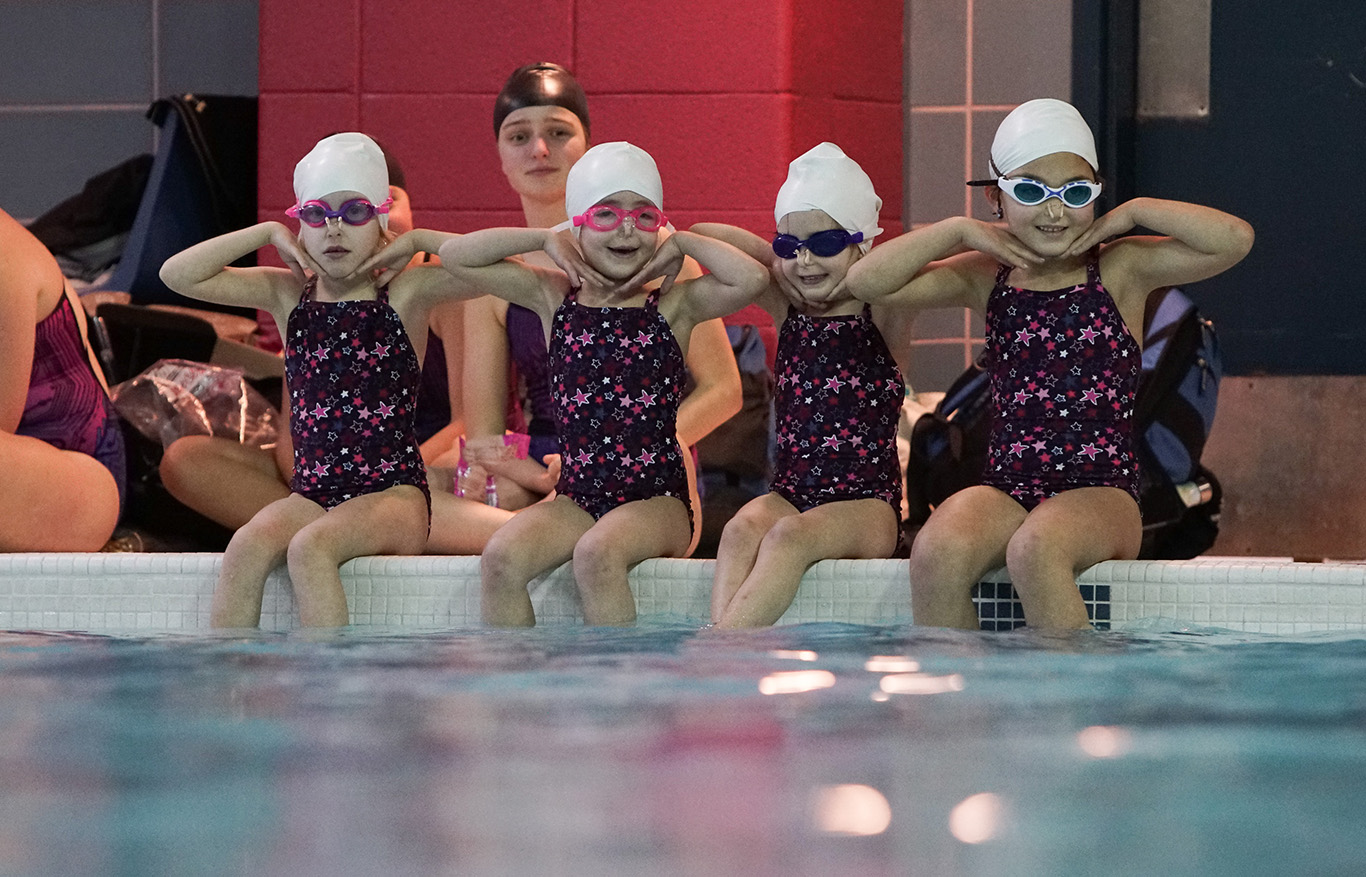
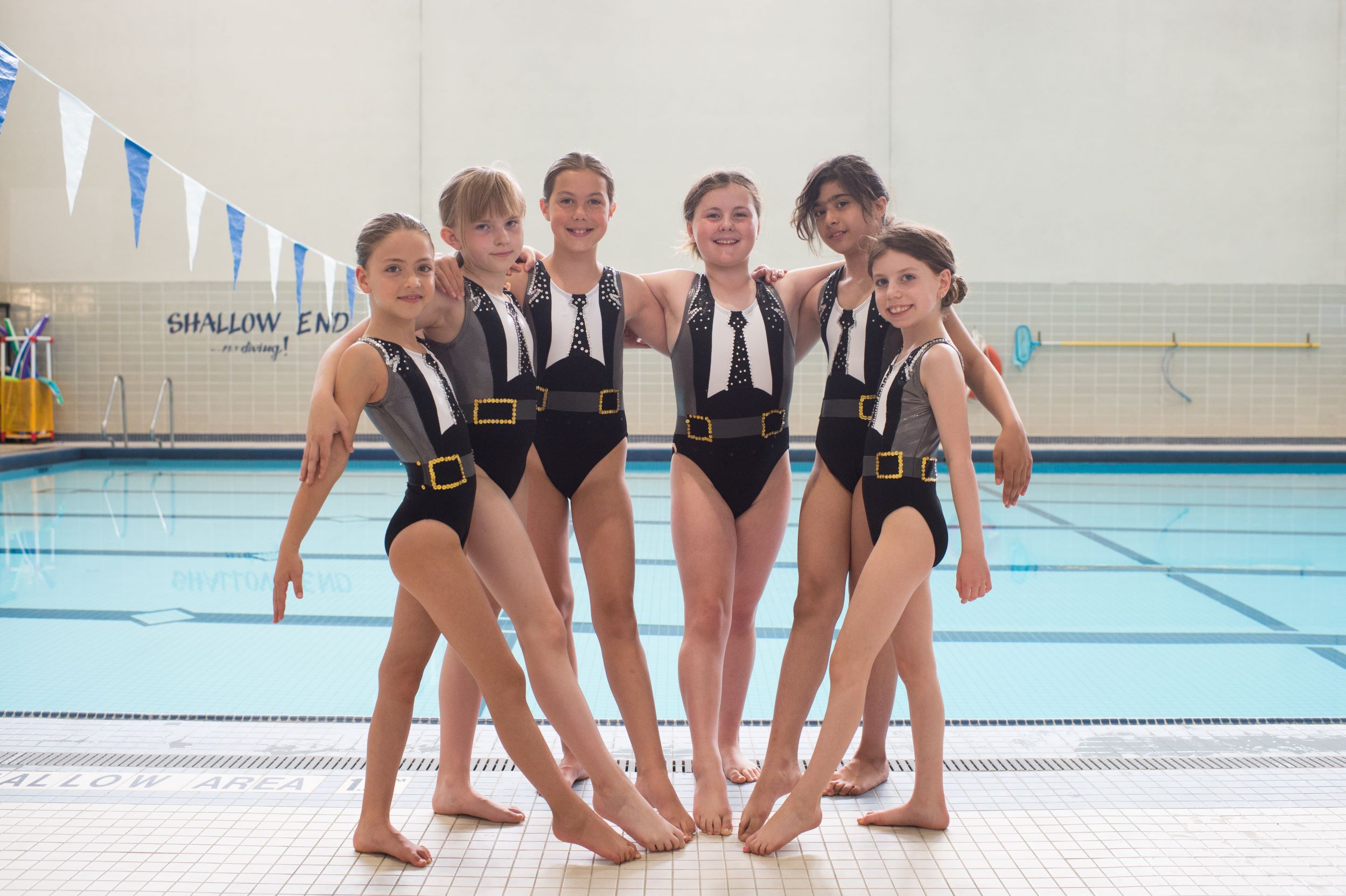
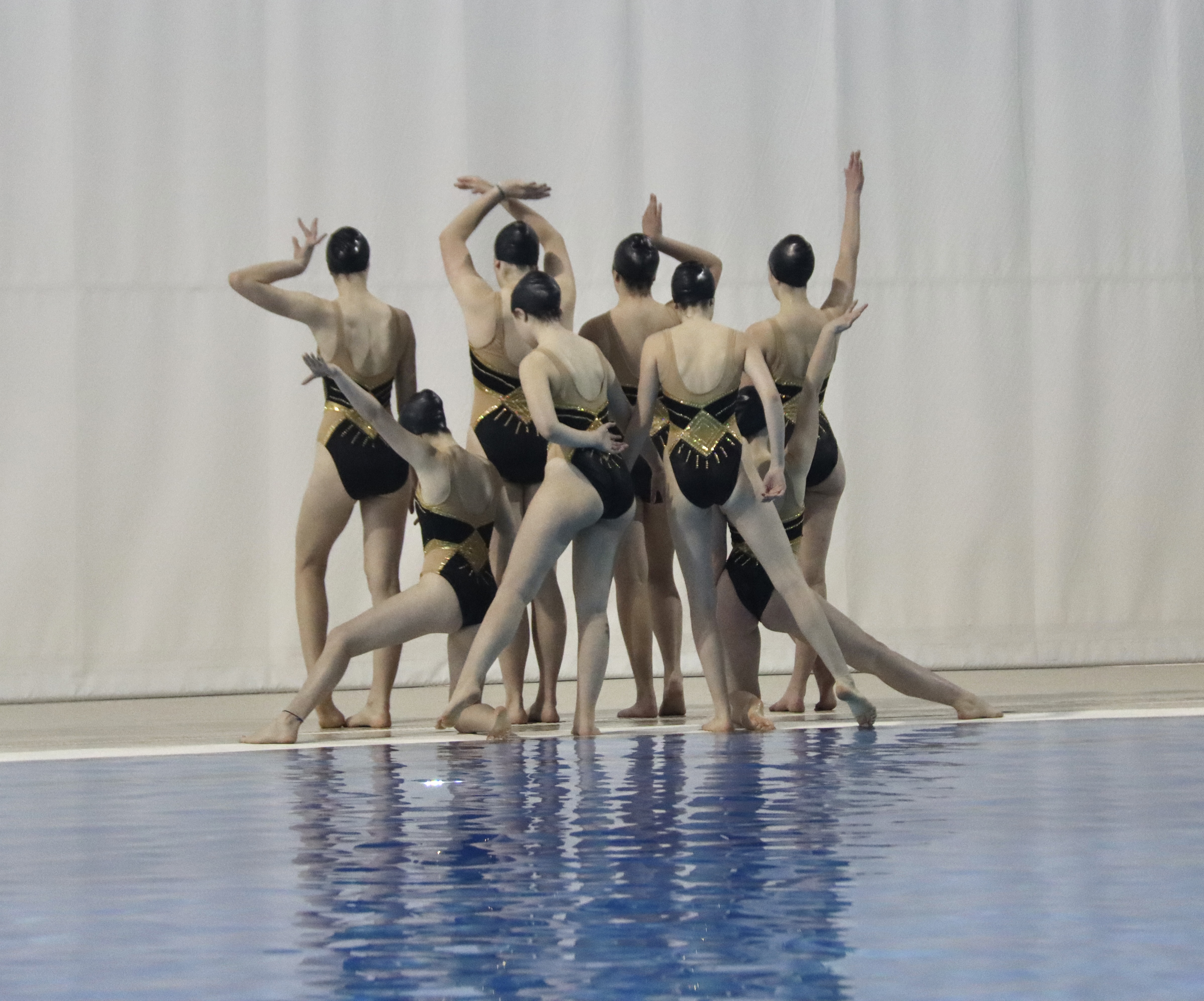
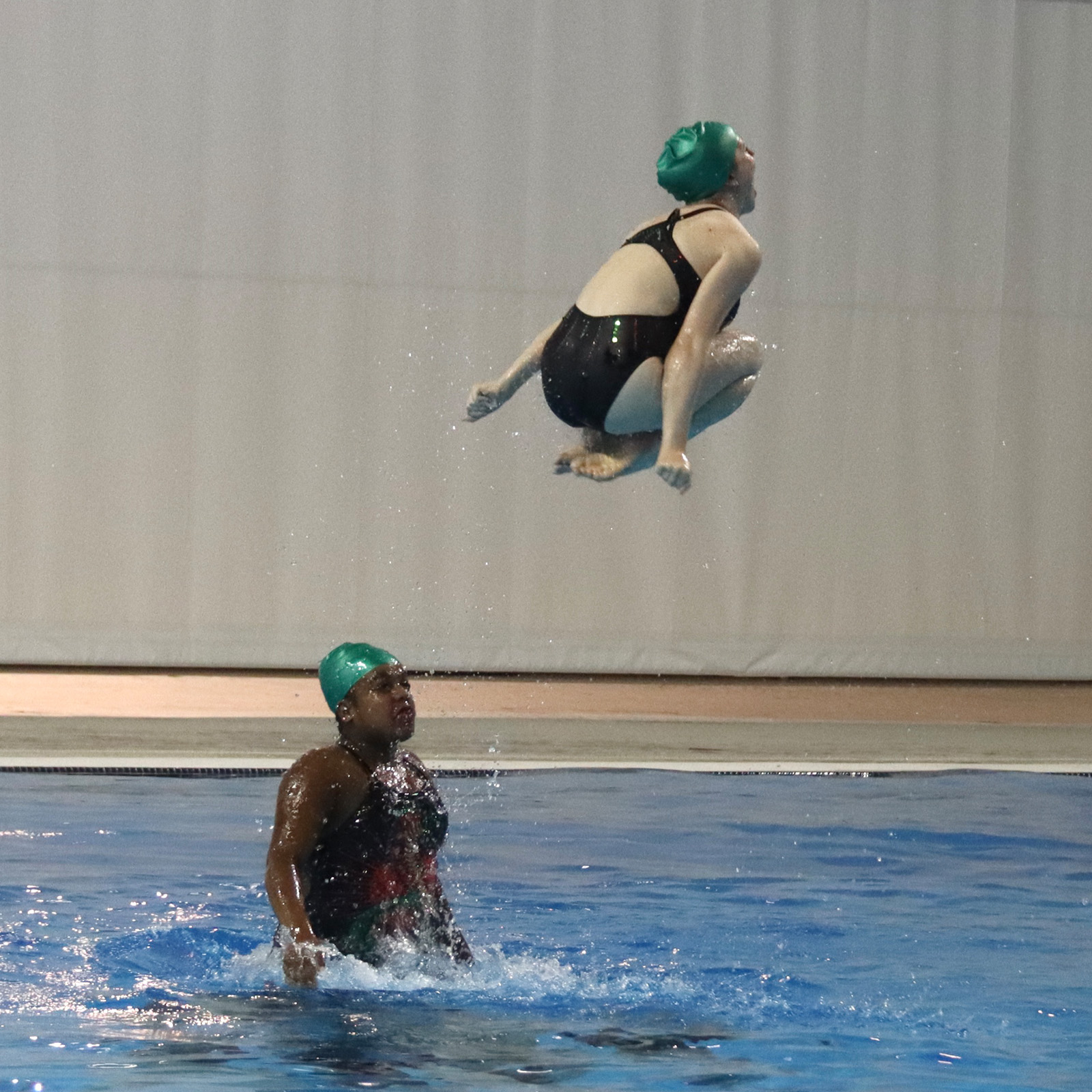
Frequently Asked Questions
How does it Work?
What is this sport actually called?
In 2017, FINA, the world governing body for aquatic sports, decided to rename ‘synchronized swimming’ ‘artistic swimming’ to bring the name in line with artistic gymnastics. It wasn’t an altogether popular decision, but the sport is slowly transitioning over. The governing body of the sport in Ontario is now called Ontario Artistic Swimming (or OAS). Our club officially changed its name in 2021 and is now called Toronto Artistic Swimming (or TASC). However, many people still refer to the sport as “synchro”.
How do competitions work?
The competitions your Intro Comp, Teen Novice or Competitive swimmer will attend will include figures events and routine events. Junior (16+) teams also have Technical routine events.
Figures:
A figures event is a judged evaluation of each athlete’s technical skills within their age group. Swimmers compete by individually performing four different figures, each in front of a panel of judges. Combined scores from each of the four figures results in the final average and ranking. Scores are out of ‘10’ and are standardized throughout the world and at all levels. Olympic level artistic swimmers score ‘9’s and above; most Novice swimmers will score in the ‘3-5’ range and
most Competitive swimmers will score in the ‘4-6’ range.
Pro Tips for Figures Events
- Don’t invite grandparents and siblings to watch a figures competition – they are NOT exciting!
- Expect quiet! Do not create noise or do anything that could distract the judges.
- Smile or give a thumbs-up but do not talk with your child from the stands.
- Don’t clap or make any loud noise.
- Don’t use your camera’s flash.
- If you are quiet, in most cases you will be able to hear your swimmer’s scores. Or you may be able to see the marks as the judges hold them up to be recorded.
- Pack recognizable bright towels or a bathrobe so that you can identify your child on the pool deck.
- Remove all nail polish and jewelry the day before a competition.
- Remember, your child already has a coach on the pool deck, what they need is a supportive parent in the stands.
Routine Events:
During a routine event, including technical routines if Junior, your swimmer’s team will compete against other teams in their age group. The order of swims is randomized. When it is your team’s turn the team will walk out onto the bulkhead together and get into their positions for their deck work. The coach will indicate to a ref when the team is ready, a whistle will blow and the music will start. Judges sit on either side of the pool during the performance. Some are artistic judges who look at elements such as music interpretation, choreography and manner of presentation and others are technical judges who look at synchronization, execution and the difficulty of the routine. After the team finishes, they will swim to the side and exit the pool. After the next team performs scores for your team will be announced (there is a delay due to behind-the-scenes calculations). Score ranges will be similar to those in Figures events. If the meet includes both figures and routine events, there will also be a Championship score which indicates the team’s overall placement in the competition. Championship Score is made up of each team member’s figures score (50%) and the team’s routine score (50%). Once all teams have performed and the competition is complete coaches often ask judges for feedback so they can make changes to improve the routine before the next competition.
Pro Tips for Routine Events
- Expect loud! Cheer on all the teams, but please make sure to stay quiet at the beginning of the routine so the team can hear the music when it starts. This is the event you want to invite friends and family to attend. There will be an admission charged, usually $10.
- Never go on the pool deck. Only coaches, officials and athletes are allowed on deck.
- Commenting on, judging or criticizing any team is not appropriate.
- Take video of your team’s routine and take pictures WITHOUT a flash.
- Wear light, comfortable clothing and bring a water bottle as the stands get very hot.
- Do not stand or come or go from the gallery while music is playing – this is distracting to the judges, swimmers and other spectators.
- Buy a program or bring some paper if you’d like to keep track of the scores as they are announced.
What’s the deal with the hair and makeup?
This is a question that swimmers and parents get asked a lot, and it can be useful to have an answer!
There is a performance tradition in artistic swimming that goes back to the earliest days of the sport and that has become ingrained in its culture. In a routine competition, judges look at a team’s synchronization, the difficulty of the skills performed, and artistic impression. The artistic impression score is based only on how well the swimmers interpret the music and how well the theme of the routine is expressed.
The swimmers’ suits and hair aren’t part of the judging criteria, but because of the traditions of the sport, it’s customary for swimmers to have glittered suits, gelled
hair and makeup that you can see from the stands. Coaches take care to choose music, suit designs and hair and makeup that will appeal to judges and that will be age-appropriate for their swimmers.
When is it best to start?
When is the best age to start participating in an artistic swimming program? The earlier the better, so long as the swimmer is reasonably comfortable in the water.
Most swimmers begin in a recreational program, where they learn not only artistic swimming basics, but also many swimming skills such as development of strokes, efficiency of movement above and underneath the water, diving, and other skills.
Many swimmers move into Intro Comp, Teen Novice or Competitive programs after a year or so of Recreational, with most joining around 10-11 years of age. It is difficult for swimmers to join Competitive programs after 12 years of age since they will be the 13-15 age category and will thus be competing against swimmers with possibly 5+ years of
competitive experience.
Artistic swimming is also a lifelong sport and many people take it up or return to it later in life, as our club’s active recreational and competitive masters programs show.
Why are swimmers spending so much time on deck?
Artistic swimming is sometimes referred to as gymnastics or dance in the water. In order to perform intricate and precise movements, swimmers must develop flexibility, strength and endurance. Land training is therefore a key component of artistic swim training at all levels.
Most practices will be at least 1⁄3 land training, including a myriad of flexibility/agility exercises (splits, bridge, etc) as well as strength and core training exercises (plank, pushups, situps).
Another key component of land training is to land-drill, whereby swimmers practice their routine on land to music, using arm movements. Land-drilling increases synchronization, helps swimmers remember routine elements and improves timing.
What is the deal with 'synchro' age?
Why is my swimmer’s ‘synchro age’ different from their age right now?
Competitive-level artistic swimming categorizes swimmers by their ‘synchro age’, which is defined as the age of the swimmer on Dec 31st of the season, eg. for the 2023-2024 season, ‘synchro ago’ is Dec 31, 2024.
Another way to calculate this is by subtracting the year the swimmer was born from the season’s winter/spring portion of the year, so a swimmer born in 2012 will be considered 12 in the 2023-2024 season, no matter what month they were born.